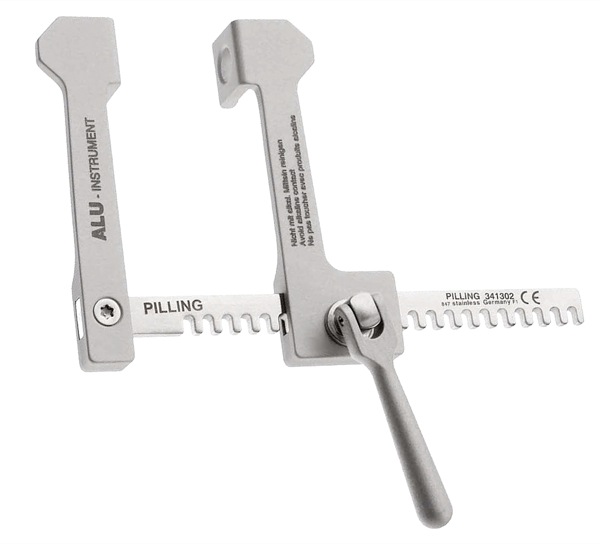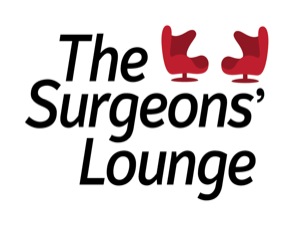
Welcome to the September issue of The Surgeons’ Lounge. We dedicate this issue to women in surgery.
Kandace Kichler, MD, a general surgeon at JFK Medical Center, in Atlantis, Fla., and Heather De Reus, BS, a medical student at the University of Florida College of Medicine, in Gainesville, provide a summary of the 10th Annual Women in Surgery Career Symposium, which was held in February in Clearwater Beach, Fla. The summary is followed by a commentary from Paige Finkelstein, MD, MPH, EIT, of Mount Sinai Medical Center, in Miami.
This issue of “The Instrument, the Name” features the Finochietto retractor.
We look forward to our readers’ questions, comments and interesting cases to present.
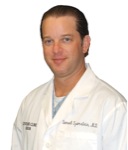
Sincerely,
Samuel Szomstein, MD, FACS
Editor, The Surgeons’ Lounge
Szomsts@ccf.org
10th Annual Women in Surgery Career Symposium
The Evolving Practice of Surgery: Baby Boomers to Generation Z

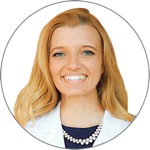
Another Annual Women in Surgery (WIS) Career Symposium is in the books, but we have to admit, this was one like no other. This symposium, born out of the living room of Sharona Ross, MD, an ambitious female surgeon, was the first of its kind and has paved the way for many women’s surgical groups that continue to challenge the norms and foster growth and mentorship. Women from many different specialties, including orthopedic, bariatric, cardiothoracic, colorectal, trauma and breast surgical oncology, were represented. There were more than 200 people in attendance encompassing premedical undergraduate students, medical students, residents, fellows, attending surgeons and retired surgeons, as well as physician assistant students, nurse practitioners and those from many other patient-centered specialties. The symposium is the base for connecting these different generations.
This year’s theme, “The Evolving Practice of Surgery: Baby Boomers to Generation Z,” served to highlight unique strengths that women in these different generations possess. By bringing awareness to these differences, attendees left with knowledge that they can use to foster improved communication and teamwork back into their own practices. The co-chairs, Dr. Ross, who specializes in minimally invasive and hepatobiliary and pancreatic cancer surgery, and Sareh Parangi, MD, a professor of surgery at Harvard Medical School, in Boston, who is the president of the Association of Women Surgeons, were not shy in sharing their own personal experiences finding their way into the field of surgery. They echoed many comments of women from the earlier generation of baby boomers that included prominent surgeon Patricia Numann, MD, the founder of the Association of Women Surgeons and former president of the American College of Surgeons.
These cross-generational discussions provided perspective into how far the field of surgery has come for women, and left attendees feeling hopeful and ready to continue encouraging improvements in other areas such as those related to race, religion, disabilities and sexual orientation. Other speakers including Julie Freischlag, MD, a professor of surgery at Wake Forest School of Medicine and the CEO of Wake Forest Baptist Health, in Winston-Salem, N.C.; Barbara Bass, MD, the chair of the Department of Surgery at Houston Methodist; Patricia Sylla, MD, a colorectal surgeon at the Mount Sinai Hospital, in New York City; Leigh Neumayer, MD, the chair of the Department of Surgery at the University of Arizona, in Tucson; along with more than 30 other distinguished faculty members shared their insight and fostered discussions among attendees. Female surgeons and their teams from all over the world, including some from Qatar and Japan, joined and happily spoke about differences in their practice and how they will take back information gained at the symposium to encourage change in their surgical communities.
The poster competition, moderated by Hilary Sanfey, MB, BCh, MHPE, the chair of the AWS Foundation, was a success, as always; new this year was the essay competition that gave multiple women a scholarship to attend the symposium. High school science, technology, engineering and math students also joined to participate in the robotics competition, hosted by Intuitive and the bowel anastomosis competition hosted by Medtronic.
Overall, the event was excellent with an outstanding turnout. Attendees were very active on social media; you can access #wis2019 on Instagram and Twitter to follow posts from the event; check out Instagram @women_in_surgery19; Twitter @womeninsurgery; Facebook “Women in Surgery International Career Symposium”; or visit our website at https://women-in-surgery.com/ for more information.
Save the date for next year. The 11th Annual WIS Career Symposium will be held Feb. 14-15, 2020, at the Sheraton Sand Key Resort, in Clearwater Beach, Fla. We can’t wait to see you there!
Commentary
Blade Babes
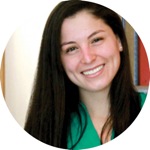
In medical school, the first day of a new clerkship was always my least favorite. I always knew at some point during the orientation that our new preceptors were going to ask us what specialty we were thinking about applying to for residency. Whenever I mentioned surgery, I was always countered with high arching eyebrows and a permutation of, “That’s a hard residency; are you sure? Don’t you want a family someday?” I always felt more judged for my career choice rather than encouraged and supported.
Calling into question students’ career choices can have a real effect on their final selection. A study in 1996 reported the following: “Badmouthing was heard frequently (76% of the responding students) and often occurred as early as the first and second years of medical school. The students heard badmouthing about their career choices most frequently when they selected surgery (91%). … The students reported that the influence on career choice was low in general, but 186 students (17% of all respondents) did report altering their choices based on badmouthing”1 and others describe it as the hidden curriculum, but, by any name, the superficial and demeaning comments that students hear about particular career choices are thought to play a major role in discouraging the selection of primary care careers. This paper explores the frequency and effect of badmouthing on career choice with the hypothesis that it is more frequently heard about primary care disciplines but has relatively little influence on actual career choice. For women, these effects can be especially detrimental given the additional societal pressures of homemaking, caretaking and rearing children.
Finding mentors in medical school for women to discuss personal challenges can be arduous. The underrepresentation of women in academic surgery is a trend that was even recognized in a 2014 Association of American Medical Colleges–sanctioned study. Only 38% of general surgery residents were women, compared with pediatrics (71%), family medicine (55%), OB-GYN (83%) and pathology (54%).2 During the same time period, surgery had 11,549 faculty at U.S. medical schools; only 19.1%, 13.8% and 7.0% were women who respectively held assistant professorship, associate professorship or full professorship positions.3
This begs the question: Could a lack of female role models in these departments be subconsciously perpetuating stereotypes and gender expectations? Is it possible that when female medical students look around the OR and see only male physicians, there are subconscious cues also influencing their choices?
The answers to these questions are rapidly changing. Various social media promotions have helped evolve the OR culture to one that is tolerant and accepting of women in the OR. For example, the April 2017 cover of The New Yorker magazine pictured four female surgeons and subsequently injected new life into the #ILookLikeASurgeon campaign. The #ILookLikeASurgeon movement celebrating women in surgery has since produced over 40,000 individual tweets and made over 128 million impressions.4 Additionally, the same cover spurred the #NYerORCoverChallenge, which had women reproducing the cover art through their photos taken in ORs around the world.
The virility of these posts is proof that other female surgeons and young female physicians interested in surgery are desperate to see each other and hear from each other, and to connect and receive support from one another. Platforms such as Facebook and Instagram enable us to seek mentorship and solidarity, to strengthen our networks and work on facing challenges in the medical field together.
In her book “Lean In: Women, Work, and the Will to Lead,” Sheryl Sandberg states, “The more women help one another, the more we help ourselves. Acting like a coalition truly does produce results.”5 As true as this quote is for Sandberg’s world of tech, it is true for our world in the OR. Advice on balancing career and social responsibilities is critical during medical school while we try to figure out our careers. By attending WIS conferences, joining the various organizations for women in surgery, and organizing/attending social events with the female surgical residents and faculty, these mentors can become readily apparent. Having taken advantage of these opportunities myself when I was a medical student, I successfully marched into general surgery and couldn’t be happier with the decision to do so.
References
- Hunt DD, Scott C, Zhong S, et al. Frequency and effect of negative comments (“badmouthing”) on medical students’ career choices. Acad Med. 1996;71(6):665-669.
- Lautenberger DM, Dandar VM, Raezer CL, et al. The state of women in academic medicine: the pipeline and pathways to leadership, 2013-2014. Association of American Medical Colleges; 2014. https://store.aamc.org/ the-state-of-women-in-academic-medicine-the-pipeline-and-pathways-to-leadership-2013-2014.html. Accessed August 12, 2019.
- Blumenthal DM, Bergmark RW, Raol N, et al. Sex differences in faculty rank among academic surgeons in the United States in 2014. Ann Surg. 2018;268(2):193-200.
- Hughes KA. #ILookLikeASurgeon goes viral: how it happened. Bull Am Coll Surg. 2015;100(11):10-16.
- Sandberg S. Lean In: Women, Work, and the Will to Lead. New York, NY: Alfred A. Knopf; 2013.
Dr. Finkelstein is at Mount Sinai Medical Center, in Miami.
The Instrument, the Name
The Finochietto Retractor
The Finochietto retractor is a famous self-retaining retractor that has been used over the years during thoracic procedures (Figure). Developed by Enrique Finochietto, MD (1881-1948), an Argentinian physician, the Finochietto retractor belongs to the rack-and-pinion family of retractors.
This retractor underwent a series of modifications before it became the current instrument used in thoracic surgery worldwide. In 1914, Marin Theodore Tuffier, MD, one of the greatest French surgeons of his time, known for resection of the apex of a lung in 1891 and ligation of an aortic aneurysm in 1902, introduced the Tuffier’s retractor, a rack-and-pinion retractor. It was originally intended to provide access to the apex of the chest by spreading the second intercostal space. It had two arms with fixed blades with a serrated surface to prevent sliding from the chest wall. Because this rib spreader was not irreversible, William Rienhoff Jr., MD, a surgeon from Johns Hopkins, attached a simple screw that allowed this retractor to be tightened once the instrument was in the chosen location.
Dr. Finochietto saw this rack-and-pinion system in one of his trips to France and decided to modify it, based on his surgical experience. Dr. Finochietto added fenestrated blades and a hand-cranked lever to separate the arms and lock them in place at each stop. Dr. Finochietto began using the modified rib spreader in 1936.
The main characteristics of the retractor were its strength and simplicity. It rapidly won acceptance among American and European surgeons. This rib spreader was presented to thoracic surgeon Evarts A. Graham, MD, in July or August 1940 by Dr. H. Aguilar from Buenos Aires, and was used for the first time in the United States at the Chest Service of Barnes Hospital in St. Louis, where Dr. Graham was the chief of surgery. The original Finochietto spreader was modified and adapted for application in cardiac, abdominal and lumbar surgery.
The Finochietto retractor continues to be one of the most frequently used self-retaining retractors in surgical procedures all over the world. It still provides good surgical exposure, with the priceless advantage of enabling surgical assistants to focus on the surgery instead of providing retraction. These characteristics have made the Finochietto retractor synonymous with open surgery.
Suggested Reading
- Bonfils-Roberts EA. The rib spreader: a chapter in the history of thoracic surgery. Chest. 1972;61(5):469-474.
- Deysine M. Enrique and Ricardo Finochietto: surgery, the ultimate devotion. Surgery. 1973;73(4):490-499.
- Todo Argentina. Enrique Finochietto (1881-1948). www.todo-argentina.net/ biografias/ Personajes/ finochieto.htm. Accessed August 13, 2019.
- Zimmer C. Turning to biomechanics to build a kinder, gentler rib spreader. The New York Times. May 16, 2011. www.nytimes.com/ 2011/ 05/ 17/ science/ 17rib.html?_r=2&ref=science. Accessed August 13, 2019.

